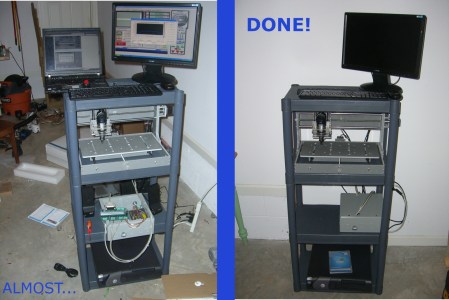

When the idea of an engine hacks theme was being kicked around at Hack a Day, the subject of rocket engines was one of the first to come up. There was a problem though; solid rocket motors are far too common to be interesting, and even hybrid rocket engines are becoming passé. We’ve never seen a liquid-fuel rocket build before, so that’s what this roundup evolved into.
First up is [Robert Watzlavick], who has been has been building liquid fueled engines for the last decade. He started out with an uncooled kerosene/LOX whose death is seen in the title pic for this post. Lately he’s been working on a monster of an engine that is projected to deliver over 1,000 Newtons of thrust. As with many of the early rockets that launched man into space, [Robert] uses kerosene and liquid oxygen for fuel. This man knows his stuff.
Next up is a ‘kit’ liquid fuel rocket, the SS67B-3, that’s based on the German WWII Taifun missile. This engine is about as basic as you can get. There’s one fuel tank that holds both the Hydrogen Peroxide oxidizer and gasoline fuel. Both are blasted into the combustion chamber with pressurized gas. we found a write-up on this kit with some good pictures, but no video.
If high pressures, glowing metal, and huge flames pique your interest, there’s also a fabulous e-book (PDF warning) available that is a reprint of How to Design, Build and Test Small Liquid-Fuel Rocket Engines by [Leroy J. Krzyck]. This book was originally written in 1967, but lathes and mills haven’t changed that much over the past 44 years. Why not give it a go? There’s still plenty of time to complete the build before the 100th anniversary of Goddard’s first flight.











